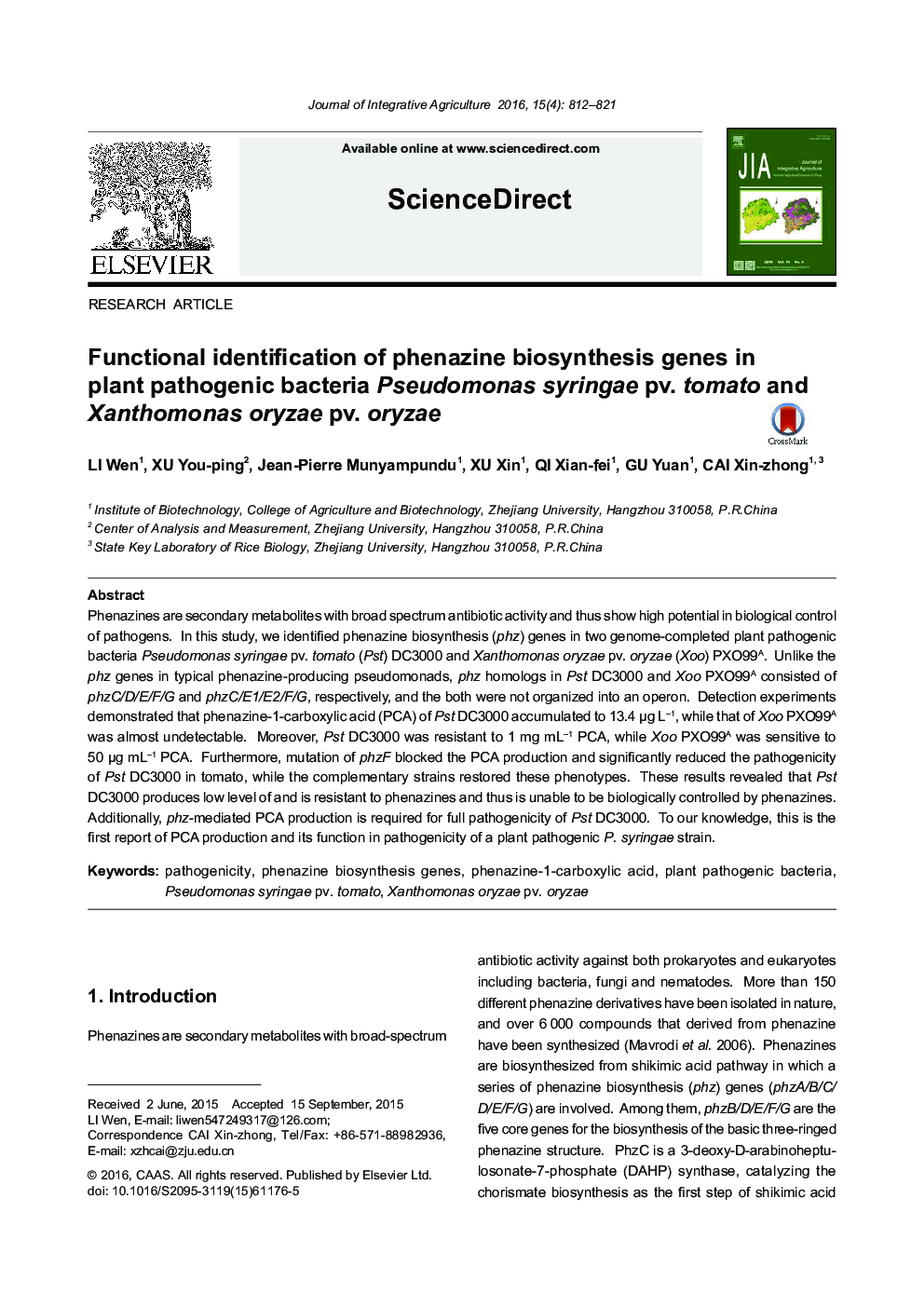| Article ID | Journal | Published Year | Pages | File Type |
|---|---|---|---|---|
| 10179979 | Journal of Integrative Agriculture | 2016 | 10 Pages |
Abstract
Phenazines are secondary metabolites with broad spectrum antibiotic activity and thus show high potential in biological control of pathogens. In this study, we identified phenazine biosynthesis (phz) genes in two genome-completed plant pathogenic bacteria Pseudomonas syringae pv. tomato (Pst) DC3000 and Xanthomonas oryzae pv. oryzae (Xoo) PXO99A. Unlike the phz genes in typical phenazine-producing pseudomonads, phz homologs in Pst DC3000 and Xoo PXO99A consisted of phzC/D/E/F/G and phzC/E1/E2/F/G, respectively, and the both were not organized into an operon. Detection experiments demonstrated that phenazine-1-carboxylic acid (PCA) of Pst DC3000 accumulated to 13.4 μg Lâ1, while that of Xoo PXO99A was almost undetectable. Moreover, Pst DC3000 was resistant to 1 mg mLâ1 PCA, while Xoo PXO99A was sensitive to 50 μg mLâ1 PCA. Furthermore, mutation of phzF blocked the PCA production and significantly reduced the pathogenicity of Pst DC3000 in tomato, while the complementary strains restored these phenotypes. These results revealed that Pst DC3000 produces low level of and is resistant to phenazines and thus is unable to be biologically controlled by phenazines. Additionally, phz-mediated PCA production is required for full pathogenicity of Pst DC3000. To our knowledge, this is the first report of PCA production and its function in pathogenicity of a plant pathogenic P. syringae strain.
Related Topics
Life Sciences
Agricultural and Biological Sciences
Agricultural and Biological Sciences (General)
Authors
Wen LI, You-ping XU, Munyampundu Jean-Pierre, Xin XU, Xian-fei QI, Yuan GU, Xin-zhong CAI,
